Dialect Classification
Grouping the dialects of Romani
Here is a map depicting some of the better-known dialects of Romani.
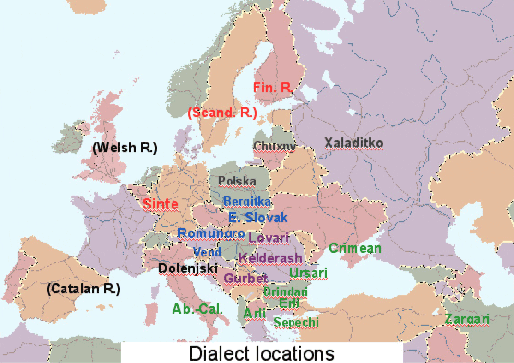
For samples of words, sentences, and sounds in various dialects of Romani, and for maps displaying some of the more conspicuous dialectal features, consult our section on Romani Dialects Interactive.
There is a tendency in Romani linguistics to identify, tentatively at least, the following dialect groups:
1) The Balkan dialects
(also called: 'Southern Balkan', 'Southern Balkan 1')
Balkan dialects of Romani are spoken in Turkey, Greece, Bulgaria, Macedonia, Albania, Serbia (Kosovo), Romania, Ukraine, and Iran.

Dialects belonging to this group include Arli (Macedonia, Kosovo, Greece), Erli (Bulgaria), Mečkar (Albania), Sepeči (Greece, Turkey), Ursari (Romania), Crimean Romani (Ukraine), Zargari (Iran), and others.
The diagnostic of characteristic features of this group of dialects include:
sine for 'he/she was'
Third person pronouns ov, oj, on
Shortened possessive pronouns mo 'my', to your'
Demonstratives akava and adava, sometimes akavka
Loan verbs are usually adapted with -in- (but -iz- appears in the Black Sea coast region)
2nd Pl. past tense –en in tume kerden 'you.PL did'
Future tense in ka, sometimes ma
2) The Balkan zis-dialects
(also called: 'Drindari-Bugurdži-Kalajdži group', 'Southern Balkan 2')
These dialects are spoken in northern and central Bulgaria and Macedonia.
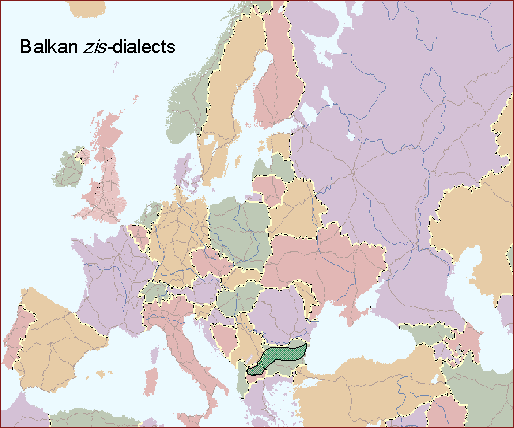
They include the dialects of the Drandari/Drindari, Kovački, Kalajdži and Bugurdži (but note that these are occupational designations, and are sometimes also found among groups speaking other types of dialects).
Diagnostic features that contrast with the rest of the Balkan group include:
Demonstratives kaka or kǝka
Loan verbs are adapted with –iz-
z- in zis 'day' and zi 'soul'
c- in buci 'work' and cin- 'to buy'
reduction of -e- kerela > kerla 's/he does'
3) The Southern Vlax dialects
These dialects are spoken in Serbia and Montenegro, Croatia, Bosnia-Herzegovina, Macedonia, southern Romania, Bulgaria, Greece, Albania, and Turkey.
They include the dialects of the Gurbet or Džambazi and groups known by other names such as Kalburdžu and Čergar.
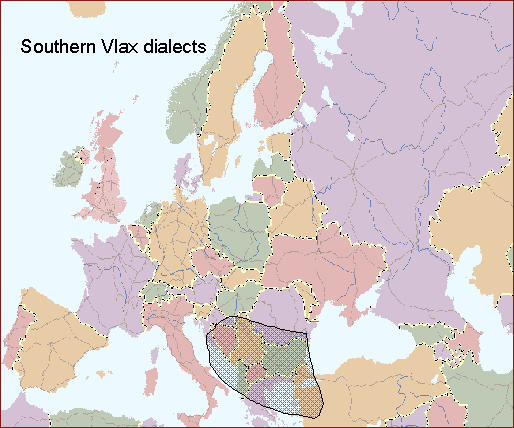
Their diagnostic features include:
seha or sesa for 'he/she was'
Third person pronouns vov, voj, von
Possessive mǝnro 'my', čo 'your'
Demonstrative gava
Nominal plural endings in -uri, -ura
Loan verbs are adapted with –isar-
Past tense and copula 1.SG in –em as in sem 'I am'
2nd Pl. Past in–en in tume kerden 'you.PL did'
Future tense in ka
Negation in in or ni
dž- in dživeh 'day'
-č- in buči 'work'
-rn- in marno 'bread'
-ej in dej 'mother'
a- in ašunav 'I hear'
4) Northern Vlax dialects
These dialects are spoken in Romania, Moldova, Hungary, Serbia, as well as in migrant communities worldwide.
The most widespread and well-known Northern Vlax dialects include Kelderaš (Kalderaš), Lovari, Čurari and the dialect of the Mačvaja.

Their diagnostic features include:
sas for 'he/she was'
Third person pronouns vov, voj, von
Possessives muro 'my', čiro 'you'
Nominal plural endings in -uri, -ura
Loan verbs are adapted with –isar-, -osar- or shortened forms -i-, -o-.
1st person past tense in –em
džes for 'day'
-č- or -kj- in buči, bukji 'work'
Negation in či
ž- in žanav 'I know'
š- in šavo 'child'
-nr- or -nř- in manro, manřo 'bread'
-ej in dej 'mother'
khanči for 'nothing'
5) Southern Central dialects
These dialects are spoken in Hungary, Slovakia, northern Slovenia, eastern Austria, Ukraine, Romania.
They include the dialect of the Romungri, Vend and Burgenland Roman.
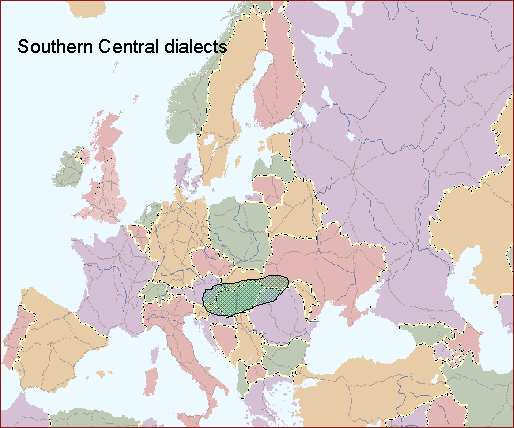
Their diagnostic features include:
sina for 'he/she was'
Third person pronouns ov, oj, on
Demonstratives in ada
Loan verbs are adapted with -in-
2nd Sg. Past and copula –al as in sal 'you are'
kereha for 'you shall do'
Imperfect in –ahi
-h- in leha 'with-him'
Loss of final -s as in dive, di 'day', va 'hand'
-r- in maro 'bread'
6) Northern Central dialects
These are spoken in Slovakia, Czech Republic, Poland, Ukraine
They include East Slovak Romani and the dialect of the Bergitka Roma of Poland

Their diagnostic features include:
ehas or has for 'he/she was', hin for 'he/she is'
Third person pronouns jov, joj, jon
Demonstratives in kada
Loan verbs are adapted with -in-
2nd Sg. Past and copula –al as in sal 'you are'
kereha for 'you shall do'
Imperfect in –as
-h- in leha 'with-him'
-r- in maro 'bread'
7) Northwestern dialects
Spoken in Germany, Austria, France, Italy, Netherlands, Belgium, Finland
They include the Sinti-Manuš dialects of Germany, France and surrounding regions, as well as Finnish Romani or Kaale dialect.
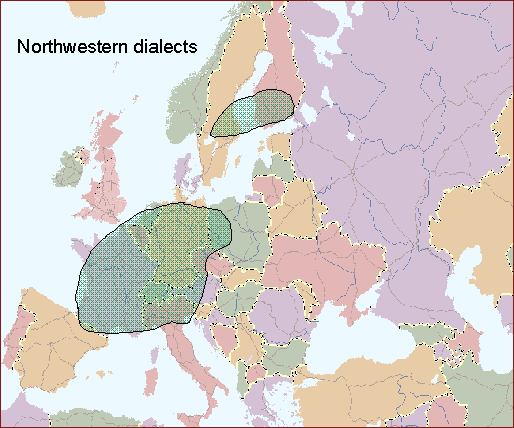
Their diagnostic features include:
his for 'he/she was' (Sinti only)
Third person pronouns jov/job, joj, jon
Demonstratives in kava
Loan verbs are adapted with -av- or -ar-
2nd Sg. Past and copula –al as in sal/hal 'you are'
-h- in leha 'with him'
h- in hom 'I am' and ho 'what' (Sinti only)
-r- in maro 'bread'
Long vowel in diives 'day'
8) Northeastern dialects
Spoken in Poland, Lithuania, Latvia, Estonia, Russia, Belarus, Ukraine
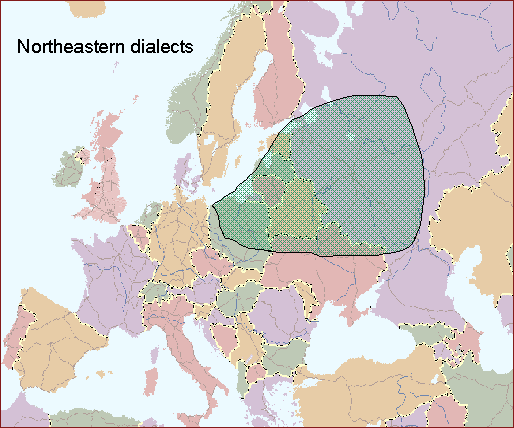
Their diagnostic features include:
isys for 'he/she was'
Third person pronouns jov, joj/jej, jone
Demonstratives in adava, dava
2nd Pl. Past in –e as in tume kerde 'you.PL did'
3rd Pl. Past in –ine as in jone kerdine 'they did'
3rd Sg. Past in -a as in jov kerdja
Loan verbs are adapted with –in-
pšal for 'brother'
-r- in maro 'bread'
9) Other dialect groups
Some additional dialects show their own distinct features. This is due either to a period of isolation from other dialects, or to the development of features shared with several different dialects branches. As separate groups we can define the following:
- British Romani, including English Romani and Welsh Romani (now extinct, and surviving as a vocabulary only, known as 'Angloromani')
- Iberian Romani, including Spanish Romani, Catalonian Romani, and Errumantxela (Basque Romani), (all extinct, and surviving as a vocabulary only, known as 'Caló')
- The Romani dialects of southern Italy, including Abruzzian and Calabrian Romani
- The Slovene Romani dialect (also known as Istriani, Hrvati or Dolenjski)
- The Romani dialects of Iranian Azerbaijan, Zargari and Romano (although these have very close connections to the Balkan dialects, see above)

